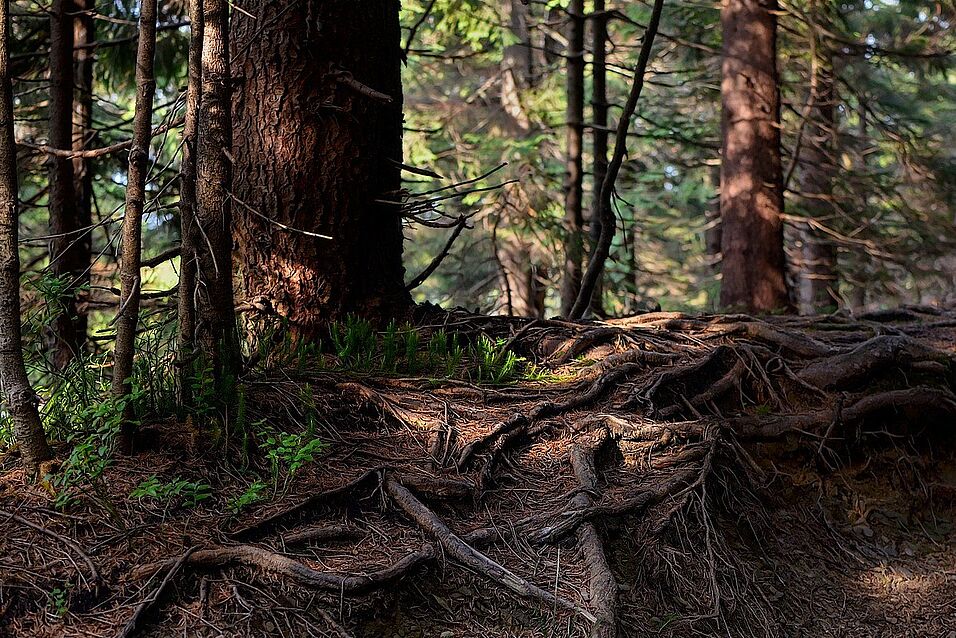We propose that microscale spatial interactions between microbes and their environment are essential for understanding RPEs, as biological (such as microbial decomposition) and physico-chemical processes (such as micro- and macroaggregate turnover) are linked at the microscale. The goal of this project is to ‘zoom in’ and investigate the RPE at the scale microorganisms operate. By analyzing how interactions between microbes and their microenvironment are linked to emerging C and N dynamics we aim to develop a unifying concept of rhizosphere priming in soil.
We will approach this goal by a combined experimental and modelling approach. We will prepare ‘experimental soils’ with plant-derived particulate organic matter (POM) encapsulated in macroaggregates and employ a novel ‘reverse microdialysis’ technique which will allow us to introduce a defined solution of labile substrate via microdiffusion into the soil, mimicking root exudations. Using state-of-the-art stable-isotope methods we will follow the fate of (i) 13C15N-labelled labile substrates, (ii) 13C15N-labelled POM, and (iii) native (unlabeled) SOM concomitantly through living and dead organic matter pools (f.e. PLFAs and microbial necromass) and trace microbial community composition (16S rRNA and ITS amplicon sequencing) and processes across the soil aggregate hierarchy at small spatial scales. In an additional experiment, we will investigate how the interaction between mycorrhizal roots and soil microarchitecture affects the RPE after 13CO2 pulse-labelling of young beech trees. We will further research into the µm-scale spatial dynamics of microbes in intact soil aggregates after labile substrate input with a joint fluorescence-in-situ-hybridisation (FISH) and nanoscale secondary ion mass spectrometry (NanoSIMS) analysis, a novel combination for the analysis of undisturbed soil cores. In a complementary theoretical modelling analysis, we will investigate possible ‘emergent’ phenomena (such as self-organisation or self-regulation) triggered by microbial microscale interactions in a spatially explicit and dynamic microenvironment, by expanding an existing individual-based computer model.
Funded by the FWF - Austrian Science Fund, Project Nr P 30339.
Cooperation Partners:
- Erich Inselsbacher, Dagmar Woebken, Stephanie Eichorst, Hannes Schmidt (University of Vienna)
- Thilo Eickhorst (University of Bremen, Germany)
- Naoise Nunan (CNRS, France)
Investigated by:
- Christina Kaiser
- Stefan Gorka
- Alexander König
- Julia Wiesenbauer


